Imagine starting your day with a clear mind, free from the incessant ping of email notifications. What if you could regain control over your time, improve your focus, and reduce stress—all by simply choosing to check email twice a day?
This may sound like a radical move in our fast-paced digital world, where email has become the lifeline of communication. Yet, it holds the potential to transform your work-life balance and productivity. Let’s delve into why limiting email checks can be a game changer.
Understanding the Need for Change
The modern workplace is plagued by a constant influx of emails, often leading to a phenomenon known as the email overload epidemic. As noted by experts, the sheer volume of messages can overwhelm us, turning our inboxes into bottomless pits of stress and distraction.
But why exactly are we so tethered to our emails, and what impact does this have on our psychological well-being?
The Email Overload Epidemic
Emails have become integral to our daily routines, yet their volume can be staggering. According to recent statistics, the average professional receives around 120 emails daily, contributing to a growing sense of email fatigue.
This constant barrage not only interrupts our workflow but also demands our immediate attention, making it difficult to prioritize tasks effectively. The result? A cycle of anxiety and decreased productivity as we struggle to keep up with our overflowing inboxes.
Consider setting up filters that automatically categorize and prioritize your emails to combat email overload. This can help you focus on what’s important and reduce the mental clutter of a full inbox.

The Psychological Impact of Constant Checking
Constantly checking emails can have a profound psychological impact. It creates a perpetual alertness, where the mind is always on standby for the next notification. This habit disrupts concentration and increases stress as individuals feel compelled to respond promptly to every message.
The psychological toll can manifest as anxiety, burnout, and a diminished ability to engage in deep, focused work. By reducing the frequency of email checks, individuals can alleviate these pressures and create space for more meaningful and productive activities.
The Benefits of Checking Email Twice a Day
Embracing a routine where you check email twice a day offers numerous advantages, not just for your productivity but also for your overall well-being. Let’s explore how this simple shift can enhance your life.
Enhancing Productivity and Focus
By limiting email checks to specific times, you can significantly boost your email productivity. This approach allows for uninterrupted periods of work, enabling you to dive deep into tasks without the constant distraction of incoming messages.
Studies have shown that when employees are not constantly interrupted, their ability to concentrate improves, leading to higher-quality work and faster task completion. This focused approach fosters a sense of accomplishment and efficiency, transforming how you manage your day.

Achieving Work-Life Balance
Work-life balance is a delicate dance, often disrupted by email demands. When emails encroach upon personal time, they blur the lines between work and home life. You can establish clear boundaries by scheduling specific times to check emails, ensuring that work stays at work.
This separation is crucial for maintaining mental health and fostering personal relationships. It allows you to be fully present in your personal life, free from the nagging pull of work-related communications.
Reducing Email-Related Stress
Reducing the frequency of email checks is a powerful strategy for reducing email stress. The pressure to constantly monitor and respond to emails can lead to heightened anxiety and a sense of being overwhelmed.
By adopting a twice-daily email routine, you can mitigate these feelings, creating a more relaxed and controlled approach to email management. This practice enhances your emotional well-being and encourages a more thoughtful and deliberate response to communications.

Practical Strategies for Implementation
Transitioning to a routine of checking emails twice a day requires strategic planning and commitment. Here are some practical strategies to help you implement this change effectively.
Setting Clear Boundaries and Expectations
Establishing clear boundaries is essential for the success of this approach. Communicate your new email policy to colleagues and clients, letting them know when you will respond.
Setting expectations helps manage their anticipation and reduces the pressure on you to reply instantly. This transparency fosters understanding and respect for your new boundaries.
| Time Slot | Activity |
|---|---|
| 10:00 AM | First email check |
| 4:00 PM | Second email check |
Utilizing Email Tools and Features
Leverage email tools to streamline your communication. Features like auto-responders can inform senders of your email schedule, reducing the expectation of immediate replies.
Filters and folders can organize your inbox, prioritizing urgent emails and allowing less critical ones to wait. These tools support your efforts to maintain a disciplined email routine.

Creating a Supportive Email Culture
Encourage a culture within your organization that supports limited email checks. Advocate for policies that respect personal time and promote efficient communication. By fostering an environment where email discipline is valued, you can collectively reduce the stress associated with constant connectivity and improve the workplace atmosphere.
Encourage team members to discuss email response expectations openly. This can lead to a more supportive work environment where everyone respects each other’s boundaries and time.
Real-Life Success Stories
Real-world examples provide compelling evidence of the benefits of checking emails less frequently. Let’s explore some success stories from individuals and organizations who have embraced this approach.
Personal Experiences of Reduced Email Frequency
Many individuals have reported significant improvements in their productivity and well-being after adopting a twice-daily email check routine.
For instance, Richard Eaton, inspired by Tim Ferriss’s “The 4-Hour Workweek,” found that this change allowed him to focus on more critical tasks, reduce stress, and improve decision-making. Individuals like Richard experience greater satisfaction in their work and personal lives by reclaiming time previously lost to email.

Corporate Examples of Email Management
Organizations have also seen remarkable benefits from implementing reduced email checking policies. Companies like Atos Origin have successfully decreased email volume by promoting alternative communication methods.
This shift enhanced productivity and fostered a more collaborative and innovative work environment. These organizations have set a precedent for improved operational efficiency and employee satisfaction by prioritizing meaningful interactions over constant email exchanges.
Tips for Maintaining Email Discipline
Sticking to a twice-daily email routine requires discipline and consistency. Here are some tips to help you maintain this practice and enjoy its full benefits.
Establishing Routine Email Checks
Develop a consistent schedule for checking emails, such as once in the morning and once in the afternoon. This routine helps establish a habit, making it easier to resist checking emails outside designated times. Consistency is key to reaping the rewards of reduced email frequency.
- Set specific times for email checks and stick to them.
- Use calendar reminders to reinforce your schedule.
- Communicate your routine to colleagues and clients.

Minimizing Notifications and Distractions
Disable email notifications on your devices to minimize interruptions during focused work periods. You can maintain concentration and productivity by eliminating these distractions, allowing email management to become a dedicated task rather than a constant background activity.
Consider using productivity apps that block notifications during work hours, helping you maintain focus and reduce interruptions.
Transforming Your Email Habits for Good
Adopting a twice-daily email check routine is just the beginning. To ensure long-term success, it’s essential to cultivate habits that support this change and encourage others to join the movement.

Long-Term Strategies for Success
Embrace long-term strategies that reinforce your commitment to checking emails less frequently. Regularly assess your progress and adjust your approach as needed.
Incorporate feedback from colleagues and reflect on this change’s positive impact on your productivity and well-being. This continuous improvement mindset will help solidify your new habits.
Encouraging Colleagues to Join the Movement
Share your experiences and successes with colleagues, encouraging them to adopt similar email practices. By promoting a culture of mindful email management, you can collectively reduce stress and enhance productivity within your organization.
Lead by example and inspire others to take control of their email habits for a more balanced and fulfilling work experience.





